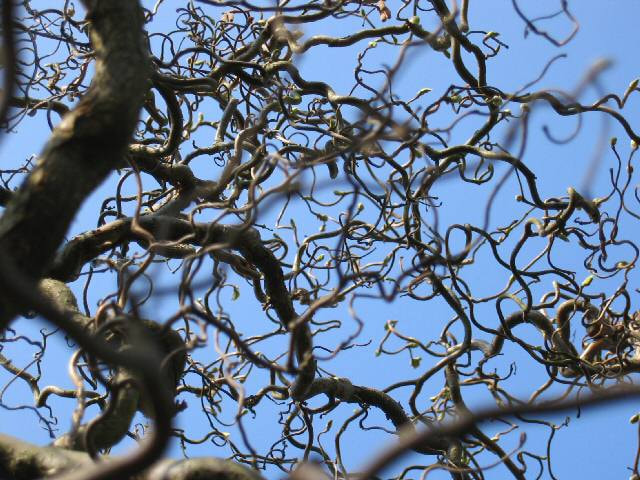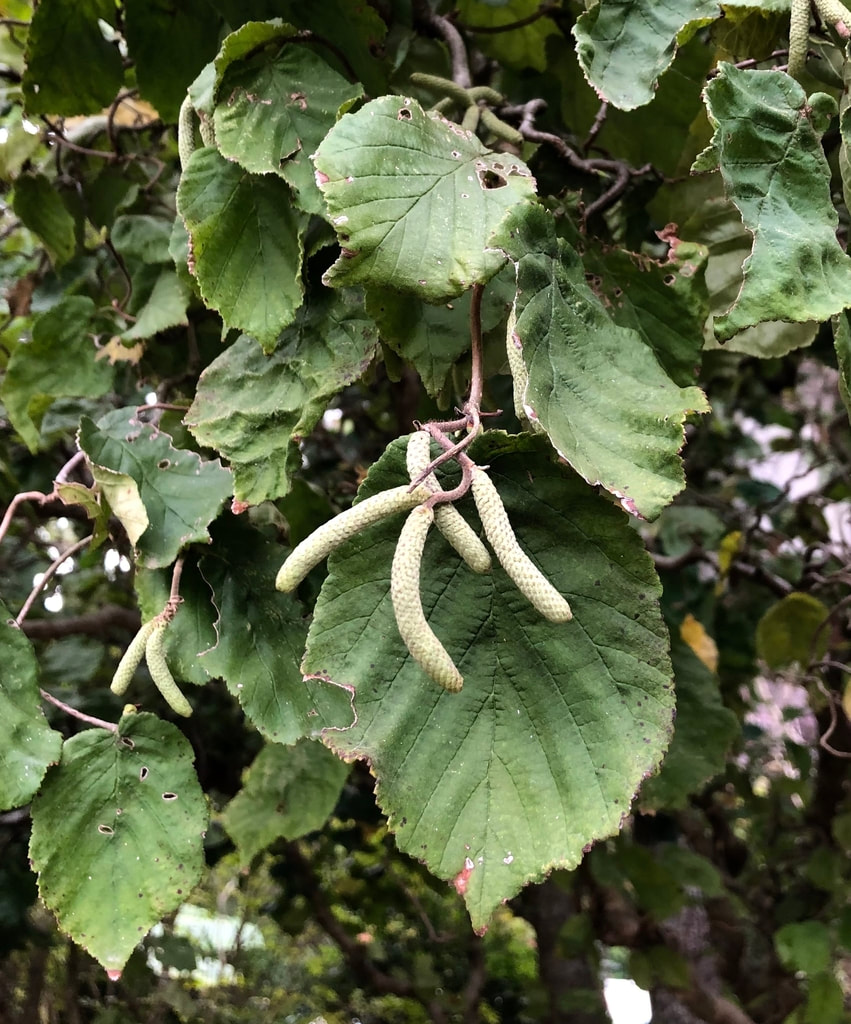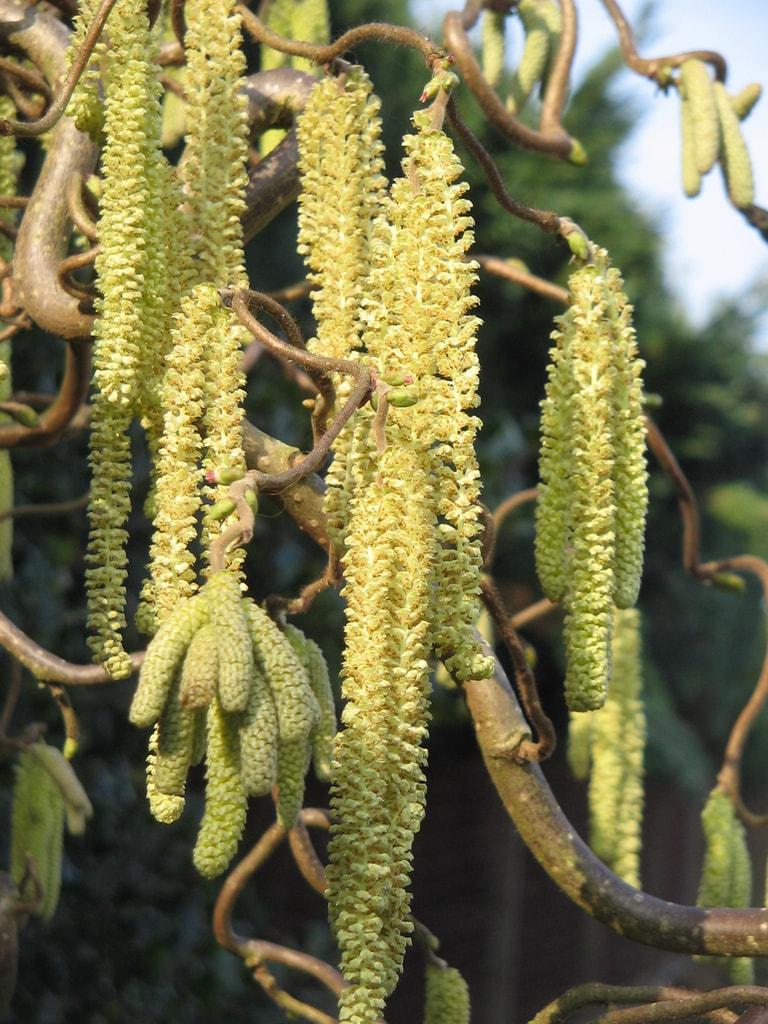|
By Matt Stevens, Pitt County Extension Director & Horticulture Agent One of my favorite parts about winter landscapes is that when all the leaves have fallen, certain other plant characteristics become much more noticeable. Many plants, it turns out, have interesting bark, colorful stems, or even unique architectural arrangements of branches that tend to be obscured the rest of the year by the leaves. If you are a plant nerd like me, you always have an eye out for plants that have these interesting attributes that shine in winter. One particularly interesting plant that stands out in winter months is Corylus avellana, ‘Contorta’, commonly known as Harry Lauder’s walking stick.
Walking stick is a grafted plant, and gardeners who grow this plant must pay attention to the suckers that emerge from below the graft union. These suckers will not have the contorted characteristic; rather, they will grow straight and quite tall if not removed. The suckers also tend to have large wide leaves that will obscure the intricacies of the twisted bark above. Other than this suckering and some occasional feeding from pests like Japanese beetles and tent caterpillars, walking stick is a relatively easy plant to grow with few problems. Avoid planting it in excessively wet areas, and plant in full sun to partial shade.
Photos from and further information at: https://plants.ces.ncsu.edu/plants/corylus-avellana-contorta/
0 Comments
Leave a Reply. |
Matt Stevens
Pitt County Extension Director & Horticulture Agent Archives
July 2024
Categories |



 RSS Feed
RSS Feed